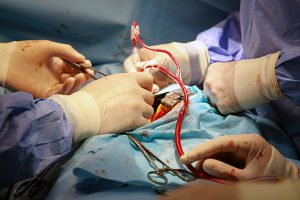Coronary artery bypass grafting (CABG) is a procedure to improve poor blood flow to the heart. It may be needed when the arteries supplying blood to heart tissue, called coronary arteries, are narrowed, or blocked.
This open-heart surgery may lower the risk of serious complications for people who have obstructive coronary artery disease, a type of ischemic heart disease. CABG may also be used in an emergency, such as a severe heart-attack.
 Symptoms of coronary artery disease
Symptoms of coronary artery disease
- Diabetes
- Heart attack
- Ischemic heart disease with angina
- Multiple blocked coronary arteries
- Severe or advanced heart failure
Risks for coronary artery bypass grafting
Because coronary bypass surgery is an open-heart surgery, you might have complications during or after your procedure including but not limited to:
- Bleeding
- An irregular heart rhythm
- Infection of chest wound
- Memory loss or trouble thinking clearly , which often improves within six to 12 months
- Kidney problems
- Stroke
- Heart attack
Your risk of developing complications is generally low, but it depends on your health before your heart surgery.
What happens during heart bypass surgery?
During the bypass procedure, your heart surgeon uses blood vessels from another part of the body and connects them to blood vessels above and below the narrowed artery, bypassing the narrowed or blocked coronary arteries. One or more blood vessels may be used, depending on the severity and number of blockages. The blood vessels are usually arteries from the arm or chest, or veins from the legs.
Life after coronary artery bypass grafting surgery
Coronary artery bypass grafting is a treatment but not a cure for ischemic heart disease. It is important to work with your doctor to help you stay healthy. This may include taking medications as prescribed by your doctor, making healthy lifestyle changes, getting regular medical checkups and participating in cardiac rehabilitation
